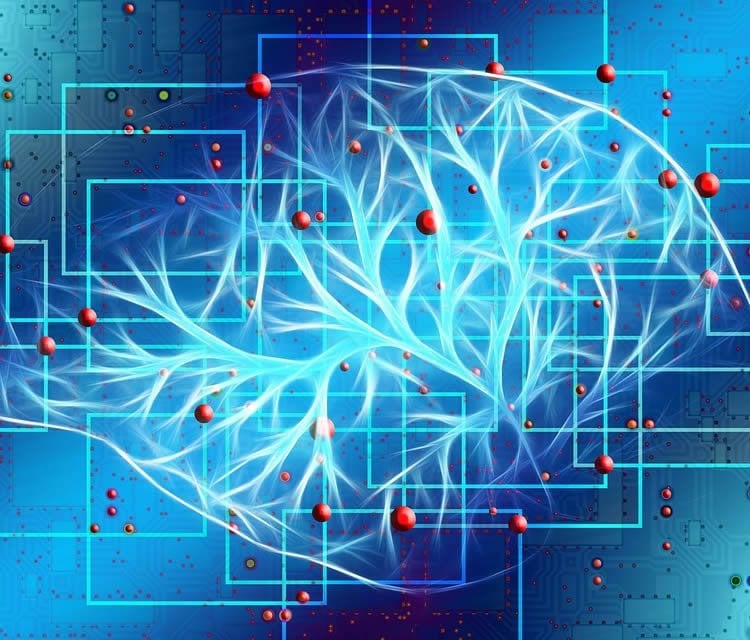Summary: A new study reveals unique functional brain networks associated with characteristic behaviors of ASD in infants at risk of developing autism.
Source: Elsevier.
A new study has identified unique functional brain networks associated with characteristic behaviors of autism spectrum disorder (ASD) in 12- and 24-month old children at risk for developing ASD. The study is published in Biological Psychiatry: Cognitive Neuroscience and Neuroimaging.
The findings help pinpoint brain regions involved in particular aspects of ASD and provide clues as to how the characteristic behaviors–known as restricted and repetitive behaviors–develop in the brain from an early age.
“This study is the first to investigate which patterns of brain functional connectivity underlie the emergence of these behaviors in infancy,” said co-first author Claire McKinnon, a lab technician in the laboratory of John Pruett, MD, PhD, Washington University School of Medicine, a lead researcher of the study.
Although the behaviors assessed in the study are important for typical development during infancy, increased prevalence of the behaviors at 12 months old is one of the earliest signs that an infant might later develop ASD. Few studies have managed to examine what is happening in the brain at this time because of the difficulty of using brain imaging techniques–such as functional magnetic resonance imaging (fMRI)–with infants and toddlers. The new study provides an important window into the brain during this critical time when brain circuits and ASD behaviors are developing.
“The study contributes to the growing body of evidence that changes in brain function, that can be measured in infants and young children using resting state fMRI, can reflect emerging differences in cognition and behavior that are associated with the autism spectrum and seen in children at increased risk for the disorder,” said Cameron Carter, MD, Editor of Biological Psychiatry: Cognitive Neuroscience and Neuroimaging.

“Functional connectivity correlates of repetitive behaviors observable in infancy could be candidates for biomarkers that predict features of ASD before a clinical diagnosis, which typically is only possible after 24 months,” said Ms. McKinnon. In addition to potential as an early prediction tool, the authors also hope that the results may have use for treatments in ASD. “There is currently a lack of effective interventions targeting repetitive behaviors, and the specific neural correlates identified in this study could also be studied as potential targets for measuring response to future treatments,” said Ms. McKinnon.
The study divided the behaviors into three subcategories–restricted behaviors (e.g., limited interests), stereotyped behaviors (e.g., repetitive movements), and ritualistic/sameness behaviors (e.g., resistance to change). The abnormal functional connections associated with these subcategories involved several brain networks, including the default mode (a network typically most active at rest), visual, attention, and executive control networks. The unique associations between these networks and specific behaviors reinforces the subcategories, whereas overlapping associations indicate that some aspects of the behaviors may share common origins.
Source: Rhiannon Bugno – Elsevier
Publisher: Organized by NeuroscienceNews.com.
Image Source: NeuroscienceNews.com image is in the public domain.
Original Research: Abstract for “Restricted and Repetitive Behavior and Brain Functional Connectivity in Infants at Risk for Developing Autism Spectrum Disorder” by Claire J. McKinnon, Adam T. Eggebrecht, Alexandre Todorov, Jason J. Wolff, Jed T. Elison, Chloe M. Adams, Abraham Z. Snyder, Annette M.,Estes, Lonnie Zwaigenbaum, Kelly N. Botteron, Robert C. McKinstry, Natasha Marrus, Alan Evans, Heather C. Hazlett, Stephen R. Dager, Sarah J. Paterson, Juhi Pandey, Robert T. Schultz, Martin A. Styner, Guido Gerig, Bradley L. Schlaggar, Steven E. Petersen, JosephPiven, John R.PruettJr., for theIBIS Network in Biological Psychiatry: Cognitive Neuroscience and Neuroimaging. Published October 2 2018.
doi:10.1016/j.bpsc.2018.09.008
[cbtabs][cbtab title=”MLA”]Elsevier”Autism Behaviors Show Unique Brain Network Fingerprints in Infants.” NeuroscienceNews. NeuroscienceNews, 13 November 2018.
<https://neurosciencenews.com/autism-brain-network-10189/>.[/cbtab][cbtab title=”APA”]Elsevier(2018, November 13). Autism Behaviors Show Unique Brain Network Fingerprints in Infants. NeuroscienceNews. Retrieved November 13, 2018 from https://neurosciencenews.com/autism-brain-network-10189/[/cbtab][cbtab title=”Chicago”]Elsevier”Autism Behaviors Show Unique Brain Network Fingerprints in Infants.” https://neurosciencenews.com/autism-brain-network-10189/ (accessed November 13, 2018).[/cbtab][/cbtabs]
Abstract
Restricted and Repetitive Behavior and Brain Functional Connectivity in Infants at Risk for Developing Autism Spectrum Disorder
Background
Restricted and repetitive behaviors (RRBs), detectable by 12 months in many infants in whom autism spectrum disorder (ASD) is later diagnosed, may represent some of the earliest behavioral markers of ASD. However, brain function underlying the emergence of these key behaviors remains unknown.
Methods
Behavioral and resting-state functional connectivity (fc) magnetic resonance imaging data were collected from 167 children at high and low familial risk for ASD at 12 and 24 months (n = 38 at both time points). Twenty infants met criteria for ASD at 24 months. We divided RRBs into four subcategories (restricted, stereotyped, ritualistic/sameness, self-injurious) and used a data-driven approach to identify functional brain networks associated with the development of each RRB subcategory.
Results
Higher scores for ritualistic/sameness behavior were associated with less positive fc between visual and control networks at 12 and 24 months. Ritualistic/sameness and stereotyped behaviors were associated with less positive fc between visual and default mode networks at 12 months. At 24 months, stereotyped and restricted behaviors were associated with more positive fc between default mode and control networks. Additionally, at 24 months, stereotyped behavior was associated with more positive fc between dorsal attention and subcortical networks, whereas restricted behavior was associated with more positive fc between default mode and dorsal attention networks. No significant network-level associations were observed for self-injurious behavior.
Conclusions
These observations mark the earliest known description of functional brain systems underlying RRBs, reinforce the construct validity of RRB subcategories in infants, and implicate specific neural substrates for future interventions targeting RRBs.






